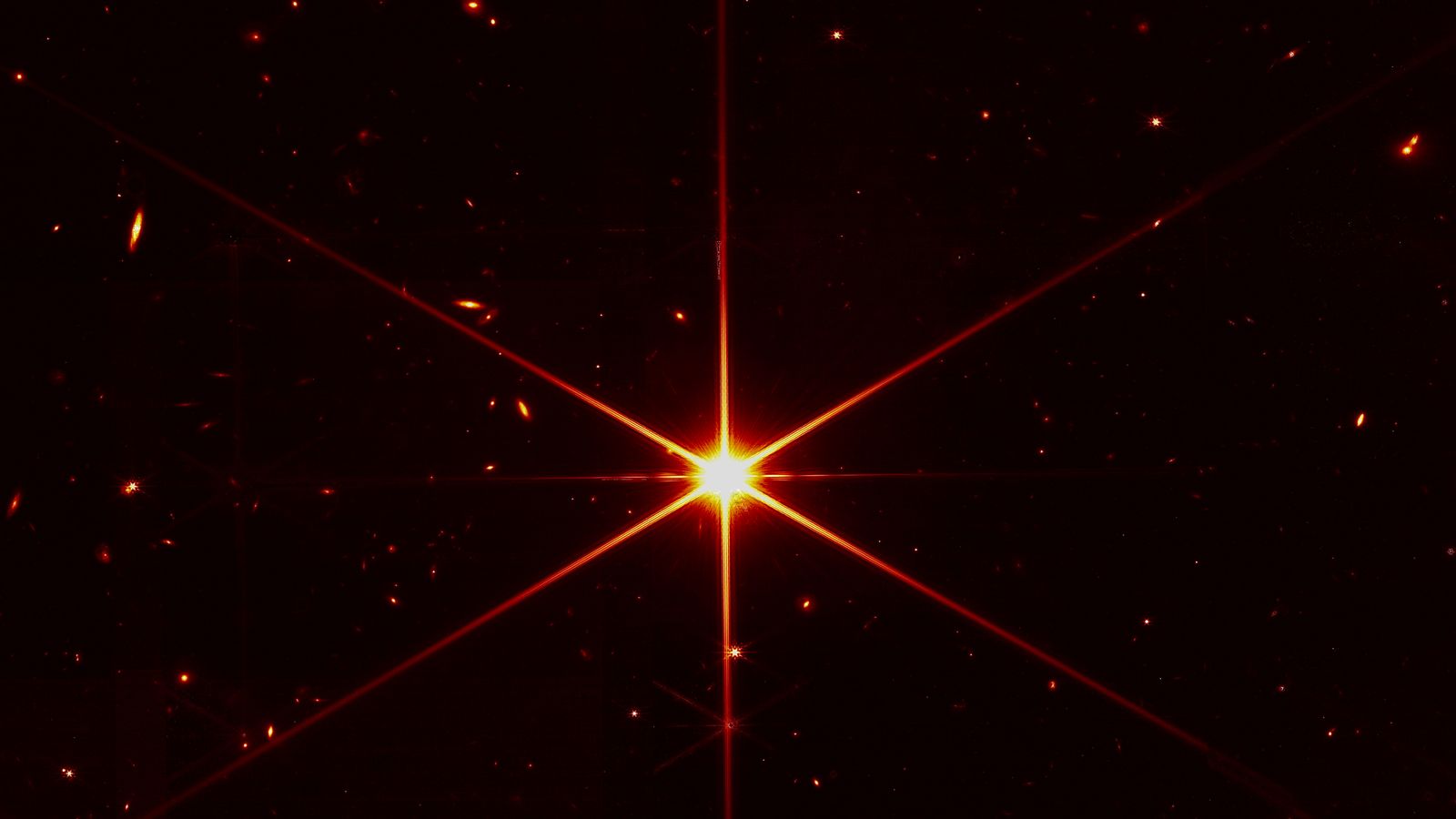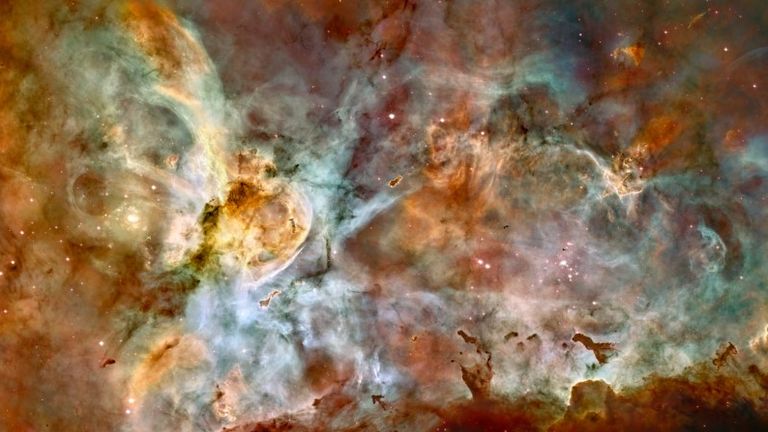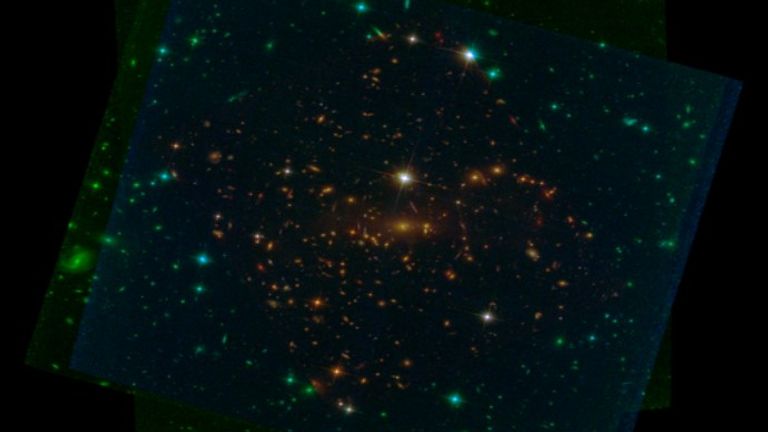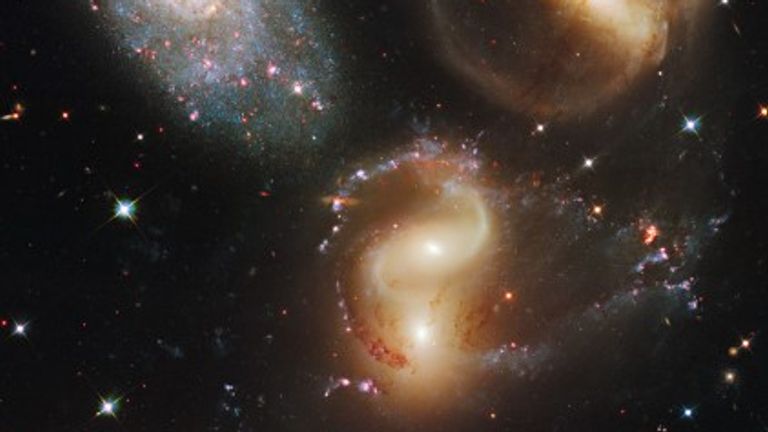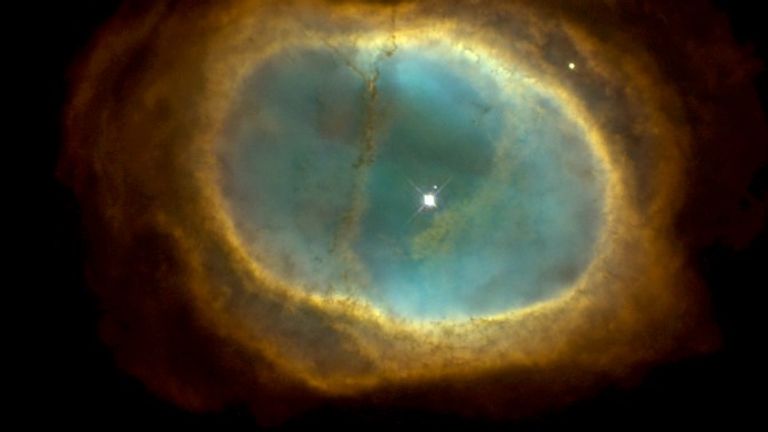Ahead of the biggest premiere the world of astronomy has ever seen, NASA has published the cosmic A-list that will be appearing through the lens of its colossal new space telescope.
And it’s not just stars. There are galaxies, a planet too, and what promises to be the deepest view back in time that humanity has ever been able to achieve.
On Tuesday, the first images from the $10bn James Webb Space Telescope (JWST) will be shared with the world.
Only a handful of the thousands of scientists and engineers who are working on the project have seen them. But the words “spectacular,” and “beautiful,” are being whispered among those who have.
In a teaser ahead of the main release, NASA, the European and Canadian Space Agencies, which collaborated on the JWST, published a list of the five places in the universe that have been imaged by the telescope first.
The locations are not exactly household names, but they have been carefully picked to showcase the capabilities of the new infrared telescope and its enormous 6.5 metre gold-plated mirror.
First is the Carina Nebula, a 50 light-year-wide cloud of dust and stars 1000 light years from earth. It’s one of the most beautiful objects in our galaxy. But it’s also important for understanding how we came to exist. The colossal cloud of dust and gas is one of the most active star-forming regions discovered so far. It’s likely our solar system formed in a place just like it.
Astrophysicist Prof Martin Barstow at the University of Leicester said: “Infrared allows you to penetrate through that dust and gas.
“It will give us a completely new perspective.”
Star-forming regions, are more than just scientifically interesting, according to Dr Jeffery Kargel of the Planetary Science Institute in Tucson, Arizona.
“They are not just beautiful, but they are philosophically mind-blowing and even spiritually stirring when pondering the processes of creation and destruction, and the near-certain origins of life in many, many planets around many stars in the nebula.”
Arguably the most mind-blowing target is one little-known outside the field of astronomy.
A region called SMACS 0723, where massive clusters of distant galaxies act to bend light due to their huge gravity. This “gravitational lens” brings the very earliest light in the universe into view.
We haven’t been able to see it before because the light is in the infrared spectrum – beyond the optics of the Hubble Space Telescope and invisible through our dusty atmosphere on Earth.
The prize, said Prof Barstow is “first light”: the potential JWST has to capture the very earliest light in the universe which came into being about 400 million years after the Big Bang.
“Webb is the only tool we have to do this,” said Prof Barstow.
Will JWST be able to make out any objects in the infrared gloom? We’ll have to wait to find out.
An entirely new view of a group of colliding galaxies called the Stephan’s Quintet will feature, as well as the “cosmic smoke ring” left by an exploded star called the Southern Ring Nebula.
The final target is miniscule compared to the others. A planet called WASP-96-b, more than 1000 light years from Earth, orbiting a star very like our own Sun.
It is hoped that JWST’s measurements of this planet will prove its capabilities as a tool for seeking life elsewhere in the universe.
“This will not be a visual spectacle, but it will be a scientific treasure,” said Dr Kargel.
JWST will be able to study the chemical make-up of the planet’s atmosphere in unprecedented detail by imaging it as it passes in front of its star.
Don’t get too excited – WASP-96-b is a Jupiter-like planet very close to its star so almost certainly scorching and lifeless.
These obscure objects in the night sky may leave quite a lot of people cold. But excitement among astronomers, cosmologists and planetary scientists ahead of Tuesday’s big reveal is palpable.
“Strap your brain in, batten down the hatches, and wait for your mind to be blown. It will be a Category 5,” said Dr Kargel.
